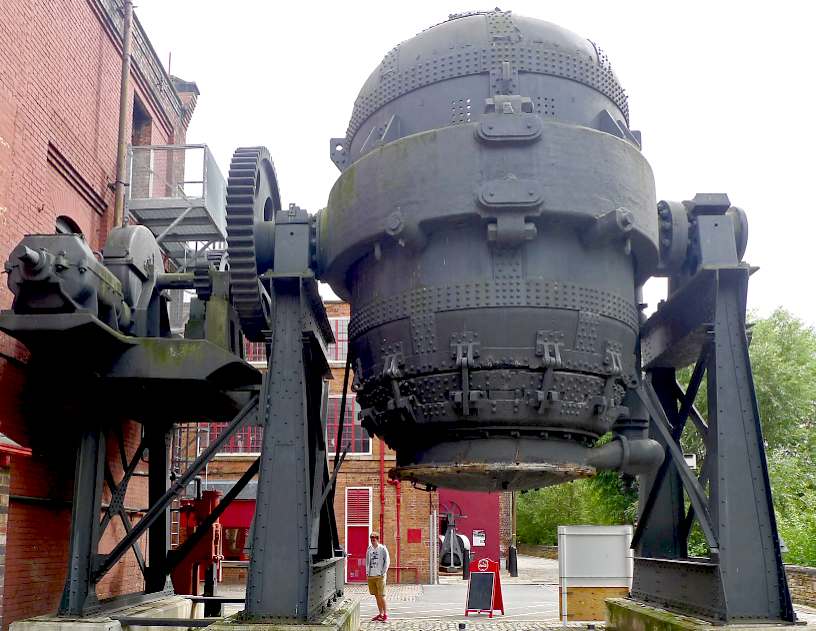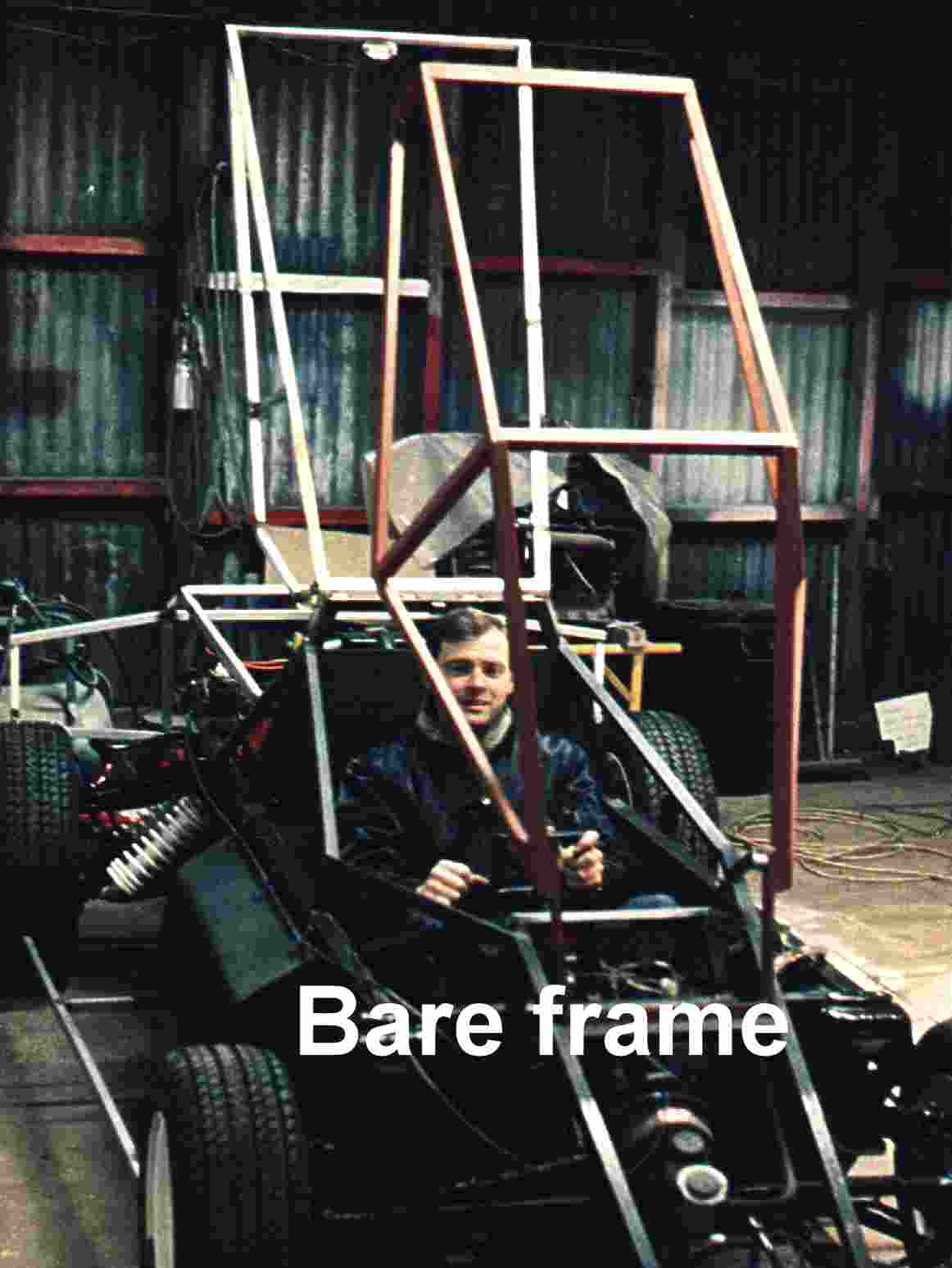|
STEEL
|
|
|
Steel is the backbone of modern industry. It is a relatively cheap building and construction material used to make cars, ships, factories and just about every kind of machinery. As a welder and vehicle constructor myself, I can confirm how versatile this material is if products are protected properly from the elements. For our modern style of living and economic well being, we could not do without it. NK
FABRICATION - "Welding is an essential skill for steel and aluminium fabricators, without it we would be back in the riveting dark ages - and dependent on nuts and bolts. There is nothing wrong with rivets and bolting structures together, but it is not so strong as a fixing that is as strong as the parent metal to the point where a join can be almost as good as a continuous run of metal." Here you see an experienced welder/fabricator preparing a weld with an angle grinder. If you are going to build anything large in metals you must learn to weld. Nelson is also a boat builder when not messing about with cars, and previously worked with precious metals such as gold and silver. Copyright photographs © 5 July 2004 and 22 October 2018. You will need the permission of Blueplanet Universal Holdings Ltd to use these photographs legally.
Ancient steel
Steel was known in antiquity, and may have been produced by managing the bloomery so that the bloom contained carbon. Some of the first steel comes from East Africa, dating back to 1400 BCE. In the 4th century BCE steel weapons like the Falcata were produced in the Iberian peninsula. The Chinese of the Han Dynasty (202 BCE – 220 CE) created steel by melting together wrought iron with cast iron, gaining ultimate product of a carbon intermediate—steel—by the 1st century CE. Along with their original methods of forging steel, the Chinese had also adopted the production methods of creating Wootz steel, an idea imported from India to China by the 5th century CE. Wootz steel was produced in India and Sri Lanka from around 300 BCE.
This early steel-making method employed the use of a wind furnace, blown by the monsoon winds. Also known as Damascus steel, wootz is famous for its durability and ability to hold an edge. It was originally created from a number of different materials including various trace elements. It was essentially a complicated alloy with iron as its main component. Recent studies have suggested that carbon nanotubes were included in its structure, which might explain some of its legendary qualities, though given the technology available at that time, they were probably produced more by chance than by design. Crucible steel was produced in Merv by 9th to 10th century CE.
In the 11th century, there is evidence of the production of steel in Song China using two techniques: a "berganesque" method that produced inferior, inhomogeneous steel and a precursor to the modern Bessemer process that utilized partial decarbonization via repeated forging under a cold blast.
Early modern steel
Blister steel
Blister steel, produced by the cementation process was first made in Italy in the early 17th century CE and soon after introduced to England. It was probably produced by Sir Basil Brooke at Coalbrookdale during the 1610s. The raw material for this was bars of wrought iron. During the 17th century it was realised that the best steel came from oregrounds iron from a region of Sweden, north of Stockholm. This was still the usual raw material in the 19th century, almost as long as the process was used.
Crucible steel
Crucible steel is steel that has been melted in a crucible rather than being forged, with the result that it is more homogeneous. Most previous furnaces could not reach high enough temperatures to melt the steel. The early modern crucible steel industry resulted from the invention of Benjamin Huntsman in the 1740s. Blister steel (made as above) was melted in a crucible in a furnace, and cast (usually) into ingots.
Modern steelmaking
The modern era in steelmaking began with the introduction of Henry Bessemer's Bessemer process in the late 1850s. This enabled steel to be produced in large quantities cheaply, so that mild steel is now used for most purposes for which wrought iron was formerly used. This was only the first of a number of methods of steel production. The Gilchrist-Thomas process (or basic Bessemer process) was an improvement to the Bessemer process, lining the converter with a basic material to remove phosphorus. Another was the Siemens-Martin process of open hearth steelmaking, which like the Gilchrist-Thomas process complemented, rather than replaced, the original Bessemer process.
These were rendered obsolete by the Linz-Donawitz process of basic oxygen steelmaking, developed in the 1950s, and other oxygen steelmaking processes.
Steel industry
Because of the critical role played by steel in infrastructural and overall economic development, the steel industry is often considered to be an indicative for economic prowess.
Steel is an alloy consisting mostly of iron, with a carbon content between 0.02% and 1.7 or 2.04% by weight (C:1000–10,8.67Fe), depending on grade. Carbon is the most cost-effective alloying material for iron, but various other alloying elements are used such as manganese and tungsten. Carbon and other elements act as a hardening agent, preventing dislocations in the iron atom crystal lattice from sliding past one another.
Varying the amount of alloying elements and form of their presence in the steel (solute elements, precipitated phase) controls qualities such as the hardness, ductility, and tensile strength of the resulting steel. Steel with increased carbon content can be made harder and stronger than iron, but is also more brittle. The maximum solubility of carbon in iron (in austenite region) is 2.14% by weight, occurring at 1149 °C; higher concentrations of carbon or lower temperatures will produce cementite. Alloys with higher carbon content than this are known as cast iron because of their lower melting point.
Steel is also to be distinguished from wrought iron containing only a very small amount of other elements, but containing 1–3% by weight of slag in the form of particles elongated in one direction, giving the iron a characteristic grain. It is more rust-resistant than steel and welds more easily. But at present time this term is rarely used in steel industry. It is common today to talk about 'the iron and steel industry' as if it were a single entity, but historically they were separate products.
Though steel had been produced by various inefficient methods long before the Renaissance, its use became more common after more efficient production methods were devised in the 17th century. With the invention of the Bessemer process in the mid-19th century, steel became a relatively inexpensive mass-produced good. Further refinements in the process, such as basic oxygen steelmaking, further lowered the cost of production while increasing the quality of the metal.
Today, steel is one of the most common materials in the world and is a major component in buildings, tools, automobiles, and appliances. As such you can buy prefab metal buildings, sheds, even houses can be built completely out of steel. Modern steel is generally identified by various grades of steel defined by various standards organizations.
STAINLESS STEEL
Stainless steel, also known as inox steel or inox from
French "inoxydable", is a steel alloy with a minimum of 10.5%
chromium content.
Stainless steel does not readily corrode, rust or stain with water as
ordinary steel does. However, it is not fully stain-proof in low-oxygen,
high-salinity, or poor air-circulation environments. Stainless steel is used where both the properties
of steel and corrosion resistance are required. The other way to protect
steel is to paint it, or galvanize it. Modern paints are more than
sufficient to protect structural steels in buildings, for example.
A vehicle designer in a car he built from steel box section (RHS) tubing. With metal if you get something wrong you can cut the weld and re-join with few problems. You cannot do the same with wood.
LINKS and REFERENCE
Healthier alternative tastes for adventure capitalists
|
|
|
This website is Copyright © 1999 & 2016 Max Energy Limited, an environmental educational charity working hard for world peace. The names AmphiMax™, SeaVax™ and Ecostar DC50™ are trademarks. All other trademarks are hereby acknowledged.
|




